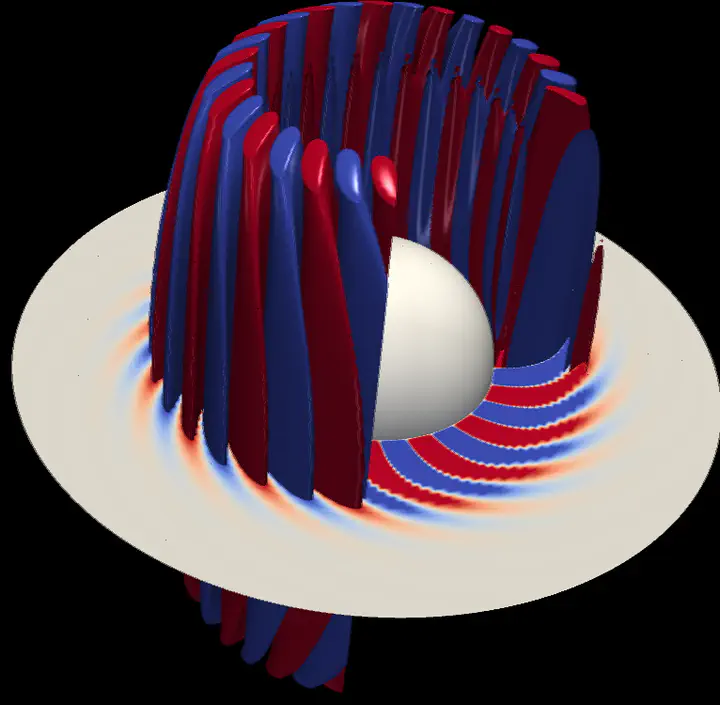
Abstract
Convection in rotating spherical layers of fluid is ubiquitous in spherical astrophysical objects like planets and stars. A complete understanding of the magnetohydrodynamics requires understanding of the linear problem—when convection onsets in these systems. This is a fluid dynamics problem that has been studied since the early 1900s. Theoretical scaling laws exist for the variation of critical quantities—the Rayleigh number Rac, the azimuthal wavenumber mc, and the angular drift frequency $ømega$c—with respect to the Ekman number E. However, their variation with the radius ratio $χ$ of the spherical shell is still poorly studied. To address this, we use an open source eigenvalue code Kore to compute these critical quantities over an extensive range of parameters spanning four decades in Ekman number and a dense grid of radius ratio from very thick to very thin shells, focusing on no-slip and fixed temperature boundary conditions. We find that these variations are explained well by the theoretical scaling laws, especially at low E, but variations in radius ratio also exist. We obtain scaling laws of boundary layer thicknesses and spatial extent of onset modes with respect to the Ekman number which differ only slightly from theoretical scalings. We show that our data set can be used to obtain good estimates of critical quantities in the moderate E range, where the vast majority of current geophysical and astrophysical fluid dynamics simulations are performed, yet where asymptotic theory is only moderately accurate. We further verify asymptotic predictions and determine best-fit asymptotic model coefficients.